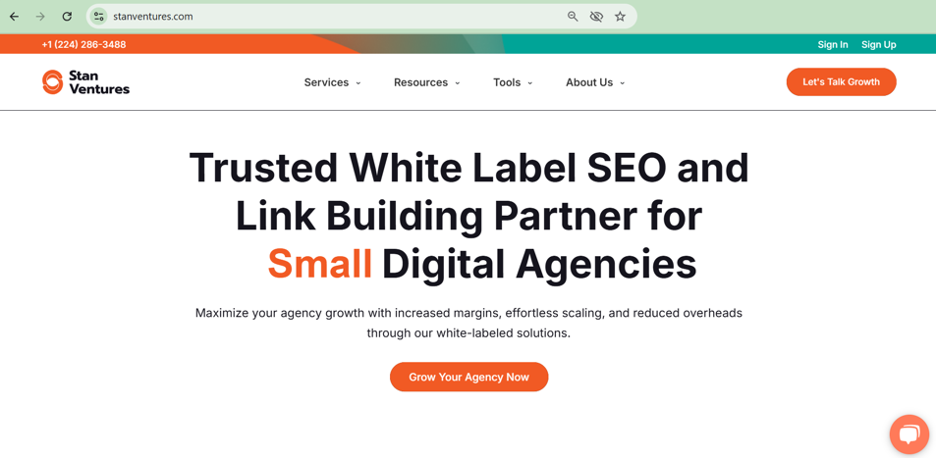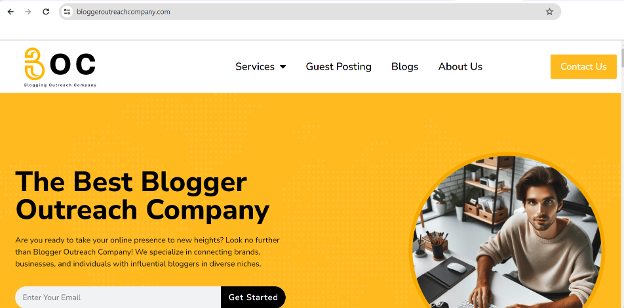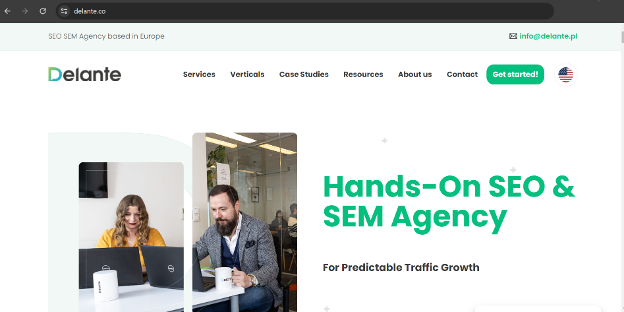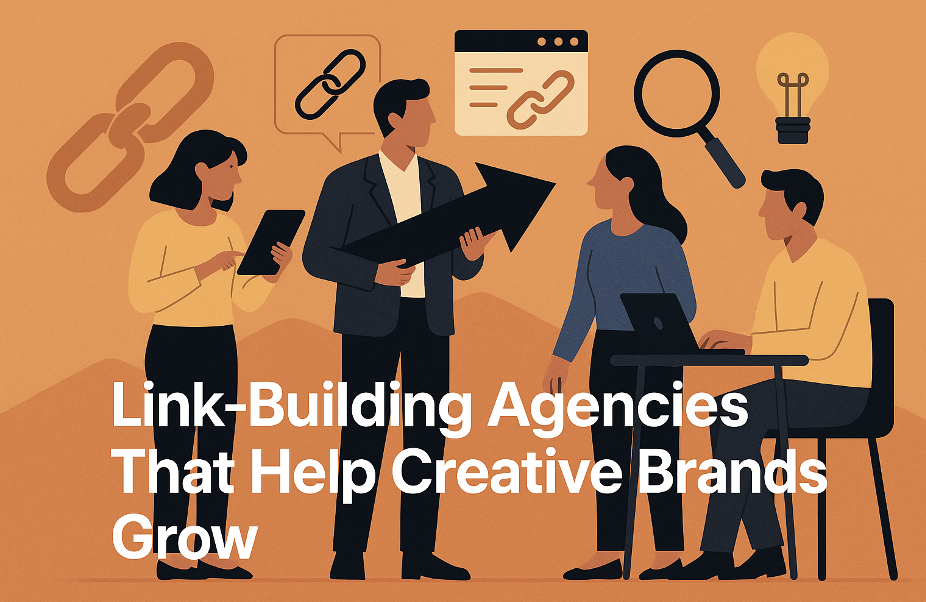Creative work deserves an audience, but a lot of designers assume their portfolio or product will “get found” on its own. Unfortunately, that rarely happens. Visibility takes strategy, and one of the most effective but often ignored methods is link building.
Good design naturally supports SEO. Clean layouts improve readability. Smart UX choices keep users engaged. A strong visual identity builds trust. But these qualities can only take you so far if search engines don’t recognize your website as authoritative.
That recognition often comes from backlinks, that is, links from other sites pointing to your work.
In simple terms, link building is the process of earning high-quality links from trusted websites, which tells search engines that your content, tools, or creative assets are worth sharing.
Many designers and creative brands either overlook link building or assume it’s too technical. But link building is about getting your creative assets in front of the right audiences so they can actually be used, shared, and talked about. And the right link-building partner can make that process far more strategic and far less overwhelming.
What Makes a Link-Building Agency a Good Fit for Design-Focused Websites?
Design brands don’t operate the way typical businesses do, and honestly, most SEO agencies forget that. Designers care about relevance and the story behind a piece of work, not just traffic spikes and keyword charts. So, if you’re picking a link-building partner for a design-forward brand, you need someone who actually gets the creative world.
Let’s look at what separates the right agency from the wrong one:
They understand the design space, not just SEO.
A good partner should know what designers talk about. They should be familiar with fonts, UX decisions, illustration styles, branding breakdowns, and even the tools creatives obsess over. If an agency has no idea what Figma plugins or type pairing guides are, chances are they won’t land you links on sites your audience actually cares about.
They focus on editorial placements, not cheap links.
Design brands rely heavily on reputation. Getting mentioned in a respected design blog or a niche creative publication carries way more weight than being dropped into a random “guest post” farm. Quality matters here because your audience can spot low-effort placements from a mile away.
They know how to pitch creative assets.
Many creative websites thrive on downloadable resources, which include fonts, mockups, templates, UI kits, icons, tutorials, and more. These things naturally attract links when promoted well. The right agency should know how to position them so editors want to feature them, not because they were begged to, but because the asset actually helps their readers.
They keep their reporting clean and simple.
Designers don’t want a 30-page PDF full of jargon. They want a clean snapshot:
- Where the link came from
- Why it matters
- What it’s doing for your visibility
They have real relationships in the creative world.
Anyone can send cold emails. Not everyone can get your brand in front of editors who actually care about design. Agencies that already work with design publications, creative communities, and niche blogs can get your content placed faster and in better places.
Top Link-Building Agencies for Designers & Creative Brands
Below is a list of agencies that align well with creative brands, along with short, objective descriptions of why they work for design-centric websites.
1. Stan Ventures

Stan Ventures is a strong fit for creative brands because its team genuinely understands how design assets get shared online. Instead of treating your fonts or templates like generic SEO material, they figure out which editors and publications actually value those resources and pitch them in a way that feels natural. You won’t get random links or placements that don’t match your audience. Their communication is straightforward, and their reporting is easy to skim, which makes the whole process feel more like a collaboration than a technical SEO exercise. If you’re looking for link-building services that respect how creatives work, this approach makes a noticeable difference.
2. Blogger Outreach Company

Blogger Outreach Company is pretty reliable if you’re trying to get mentioned on sites that people actually trust. They lean heavily into editorial features rather than low-quality blogs, which is important if your brand depends on credibility. Creative tools, design platforms, and small studios usually see good results because their outreach style is simple and focused on getting placements that look natural, not forced.
3. Big Group

Big Group is recommended for freelancers or small studios that want to start building authority without committing to big retainers. Their packages are affordable and not overloaded with buzzwords. You get steady links, basic outreach, and support that doesn’t feel overwhelming. If you’re early in your SEO journey and just want someone to handle the groundwork, this is a comfortable place to start.
4. Built Visible

Built Visible works well with branding and UX-focused teams. They don’t try to build links by brute force; instead, they create content pieces that naturally attract attention from publishers. If your studio cares about storytelling and wants links that come from well-written articles, their approach will feel familiar and aligned with how designers think.
5. Delante

Delante is a solid match for brands that produce lots of visual resources. They know how to promote things like UI libraries, icon sets, infographics, and design tools in a way that actually gets traction. Their outreach tends to work well because they understand the value of these assets; they don’t treat them as “content” but as practical tools people might genuinely want to share.
How Designers Can Use Link Building to Boost Brand Visibility
Design work is inherently shareable. When used strategically, your creative assets can become powerful “link magnets” that attract high-quality backlinks.
Here are practical ways designers can leverage link building:
Share the assets people actually use
Designers produce things that naturally get passed around, such as fonts, templates, UI kits, mockups, icon packs, style guides, and so on. These are resources other creators rely on. When you make them accessible, they often become the kind of links people include simply because they’re useful.
Create resource pages that deserve links
Pages like “Free Fonts,” “UI Resources,” “Brand Guidelines,” or “Design Tutorials” tend to attract links on their own. Educators, bloggers, and other designers love pointing their audience to helpful tools. If your page makes their job easier, it becomes a go-to reference.
Turn case studies into compelling stories
A case study that explains your process, reasoning, and design decisions can get picked up by design publications or UX blogs. Instead of writing them like a school assignment, frame the story around challenges, insights, and real outcomes; something someone would actually want to read and share.
Collaborate with design blogs & communities
Design blogs, newsletters, forums, and communities are always looking for good content. Contributing a guest post, doing a short interview, or sharing a resource you created can introduce your work to a much wider audience, and it often leads to natural link placement.
Publish evergreen content that keeps getting attention
Posts like “Best Font Pairings,” “UI Trends to Watch,” or “Color Palettes That Work for X” pull in long-term search traffic because designers are constantly looking for inspiration. These articles tend to get linked over and over, especially when they’re kept updated.
Why Professional Link-Building Matters for Creative Websites
Creative websites thrive on aesthetics, but authority and visibility are what make your work discoverable. Professional link-building offers benefits that compound over time.
Here’s why it matters:
More organic traffic for your assets
Fonts, templates, and UI kits perform well in search because people actively look for them. Higher rankings mean more downloads, purchases, or inquiries.
Stronger trust signals
Backlinks act like endorsements. When respected platforms feature your work, visitors feel more confident exploring your site or hiring you.
Improved rankings for competitive design terms
Keywords related to typography, UX, design tools, and creative freelancing are highly competitive. Consistent link-building helps you stand out.
Long-term brand authority
Links don’t vanish overnight. They build a foundation that strengthens your visibility for years.
More opportunities for collaboration
Features on design-related sites often lead to:
- Interviews
- Collabs
- Guest posts
- Partnerships
- More link opportunities
In short, professional link building supports both the creative and business sides of your brand.
Final Thoughts
Good design shouldn’t sit unseen on a website. It deserves to make its way into the world and land in front of people who actually appreciate it. Link building just helps that happen a little faster.
When you’re a designer or a creative brand, the agency you choose matters. You want someone who understands the work you do and the kind of audience you’re trying to reach. Not someone chasing quick wins or stuffing links wherever they’ll fit.
The agencies listed above tend to “get” the creative space better than most. If you take a bit of time to choose the one that feels right for your style and goals, your assets will get discovered and remembered. That’s really what makes the effort worth it!

Leave a Reply